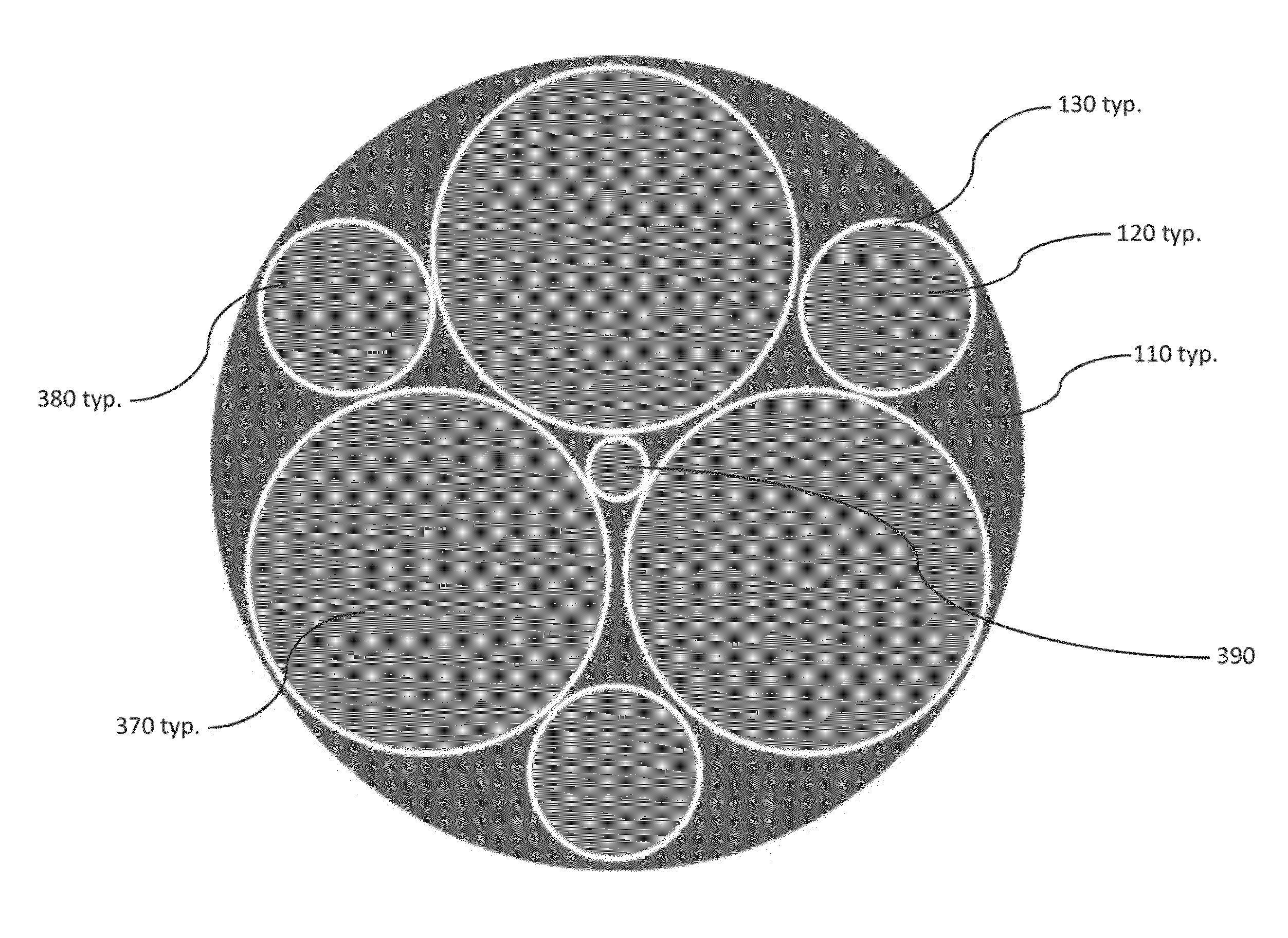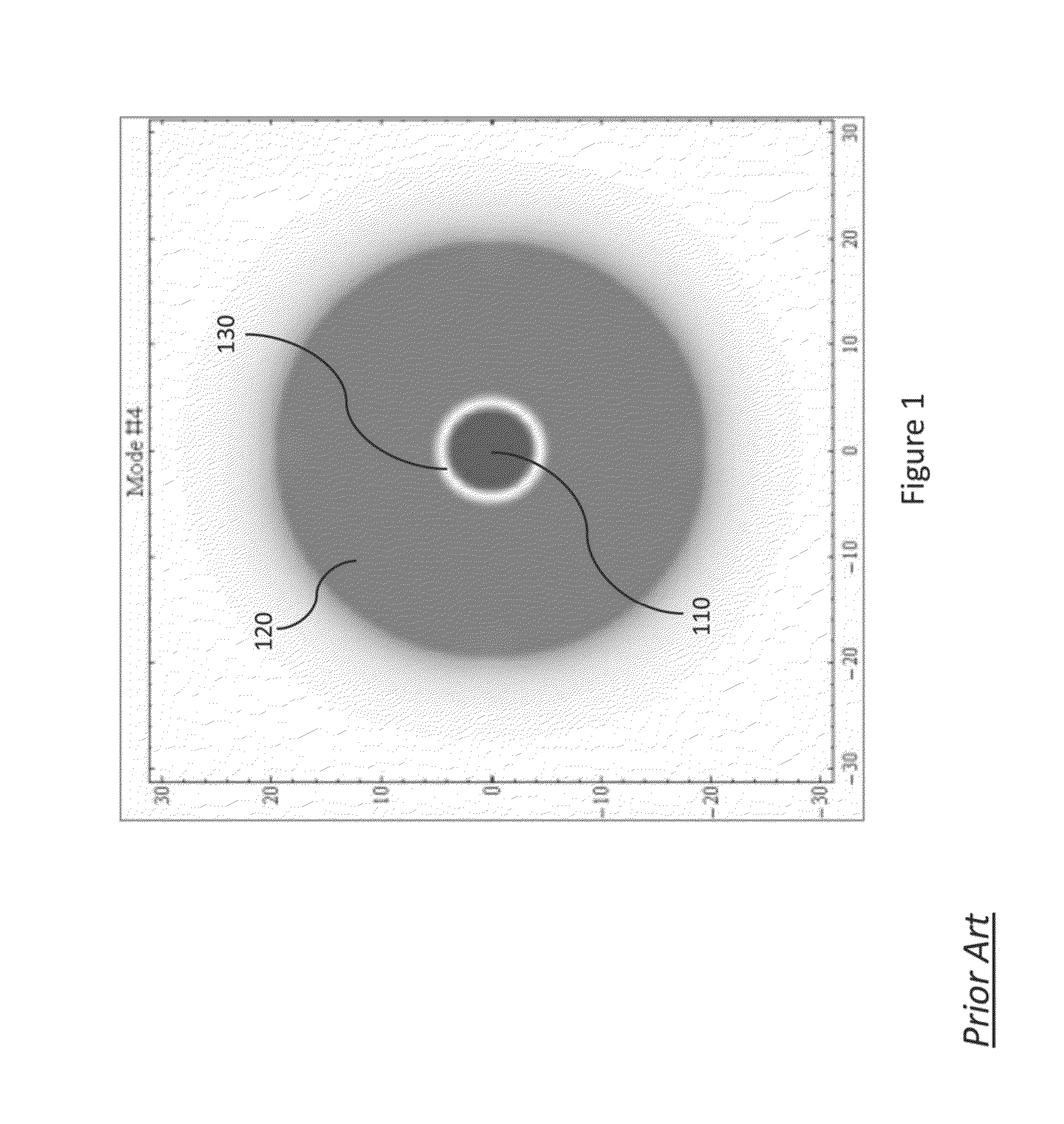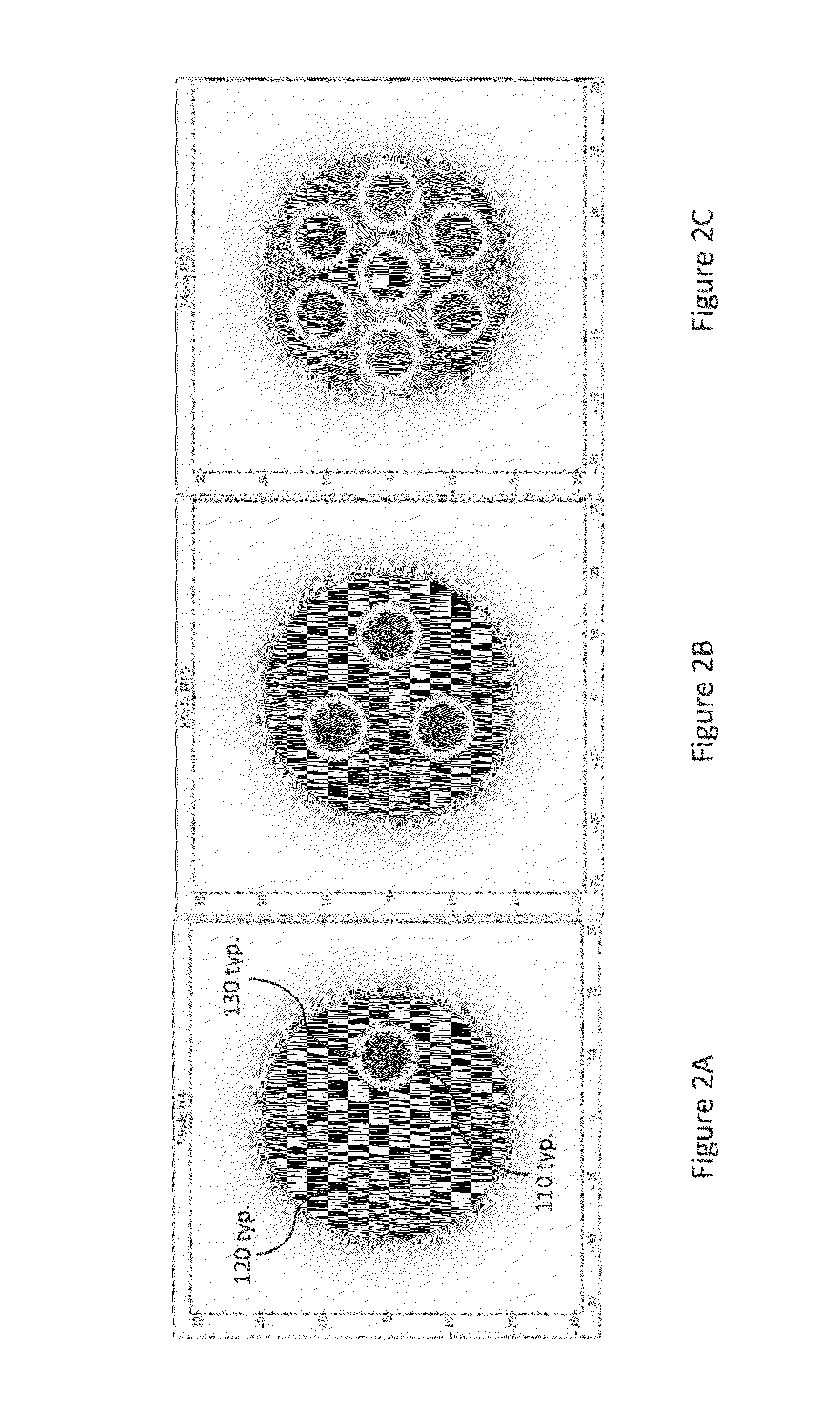Waveguides having patterned, flattened modes
a waveguide and mode technology, applied in the field of waveguides, can solve the problems of affecting the performance and utility of the very system, affecting affecting so as to achieve the effect of improving the performance and utility of the system, and improving the efficiency of the power guid
- Summary
- Abstract
- Description
- Claims
- Application Information
AI Technical Summary
Benefits of technology
Problems solved by technology
Method used
Image
Examples
example 1
Shell with a Single Strand
[0093]Turning now to FIG. 4, we show results of transverse field (not irradiance) profiles of several representative modes of a waveguide comprised of the Shell and Strand 1 parameters listed in Table 1. In this case, a single shell is filled with a single strand.
[0094]As depicted in the modal patterns of FIG. 4, field-flattened regions 410 and 420, respectively, represent different polarities of the field, and the grey-level shading corresponds its relative amplitude. The effective index decreases from the left column to the right, and the strand's shift increases from the top row to the bottom. All modal patterns are spatially scaled per the lower-left set of (scaled) axes, 430, and all quantities are dimensionless.
[0095]In the figure, each of the seven columns (each showing three patterns) corresponds to a specific modal field order (LP21, LP02, LP12, LP22 and LP03). On the other hand, each of the three rows (each showing seven patterns) corresponds to m...
example 2
Shell with Seven Strands
[0101]Turning now to FIG. 6, we show transverse field distributions (not irradiance profiles) of sixteen representative modes of a waveguide comprised of the Shell and Strand 2 parameters listed in Table 1. In this case, a single shell is filled with seven strands.
[0102]As depicted in the modal patterns of FIG. 6, field-flattened regions 610 and 620, respectively, represent different polarities of the field, and the grey-level shading corresponds its relative amplitude. All modal patterns are spatially scaled per the lower-left set of (scaled) axes, 630, and all quantities are dimensionless.
[0103]FIG. 6 also shows the transverse field profiles of 16 of the 28 non-degenerate modes allowed by a waveguide comprised of the Shell and seven strands of Strand 2 listed in Table 1. One strand is placed at the guide's center and six are placed at a radial distance of Δv=1.3π at 60° increments. For mode (i) the field's polarity changes sign from the center of the shell ...
PUM
| Property | Measurement | Unit |
|---|---|---|
| size | aaaaa | aaaaa |
| diameter | aaaaa | aaaaa |
| refractive index | aaaaa | aaaaa |
Abstract
Description
Claims
Application Information
 Login to View More
Login to View More - R&D
- Intellectual Property
- Life Sciences
- Materials
- Tech Scout
- Unparalleled Data Quality
- Higher Quality Content
- 60% Fewer Hallucinations
Browse by: Latest US Patents, China's latest patents, Technical Efficacy Thesaurus, Application Domain, Technology Topic, Popular Technical Reports.
© 2025 PatSnap. All rights reserved.Legal|Privacy policy|Modern Slavery Act Transparency Statement|Sitemap|About US| Contact US: help@patsnap.com



